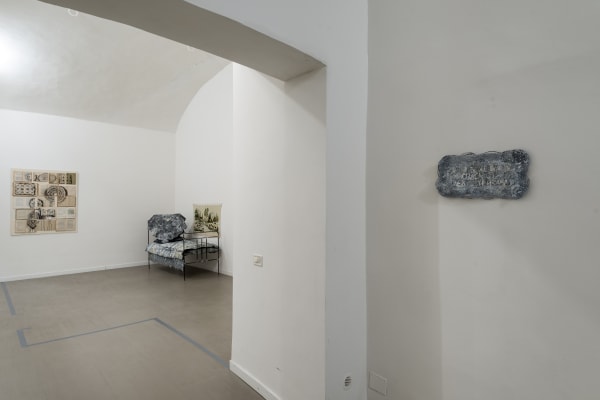Ekaterina Panikanova | Crepuscoli
EKATERINA PANIKANOVA
Crepuscoli
December 13 > February 7, 2015
La sera fumosa d'estate
Dall'alta invetriata mesce chiarori nell'ombra
E mi lascia nel cuore un suggello ardente.
Ma chi ha (sul terrazzo sul fiume si accende una lampada) chi ha
A la Madonnina del Ponte chi è chi è che ha acceso la lampada? C'è
Nella stanza un odor di putredine: c'è
Nella stanza una piaga rossa languente.
Le stelle sono bottoni di madreperla e la sera si veste di velluto:
E tremola la sera fatua: è fatua la sera e tremola ma c'è,
Nel cuore della sera c'è,
Sempre una piaga rossa languente. (Da L’invetriata Dino Campana)
Ekaterina Panikanova’s exhibition is a proposal of a journey into the domestic space, into the identity and into the body of the potential viewer.
As in Dino Campana’s poem Invetriata, the artist communicates the existence of an interior reality which manifests itself in everyday signs that represent disturbing elements.
The house, the tenants represent at the same time the interior and exterior territory of our relationships, wishes, conflicts and intimate tensions, underlining the dramatic dichotomy between the “social mask” and the authenticity of being: elements that either bring life or harass the human being.
-

Ekaterina Panikanova, Crepuscoli, z2o Sara Zanin Gallery Rome
-

Ekaterina Panikanova, Crepuscoli, z2o Sara Zanin Gallery Rome
-

Ekaterina Panikanova, Crepuscoli, z2o Sara Zanin Gallery Rome
-

Ekaterina Panikanova, Crepuscoli, z2o Sara Zanin Gallery Rome
-

Ekaterina Panikanova, Crepuscoli, z2o Sara Zanin Gallery Rome
-

Ekaterina Panikanova, Crepuscoli, z2o Sara Zanin Gallery Rome
-

Ekaterina Panikanova, Crepuscoli, z2o Sara Zanin Gallery Rome
-

Ekaterina Panikanova, Crepuscoli, z2o Sara Zanin Gallery Rome















